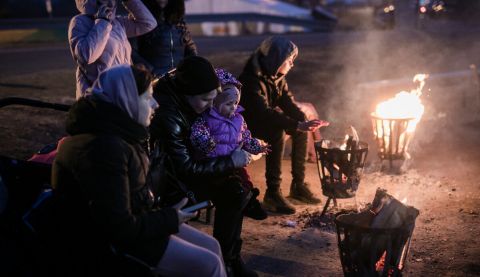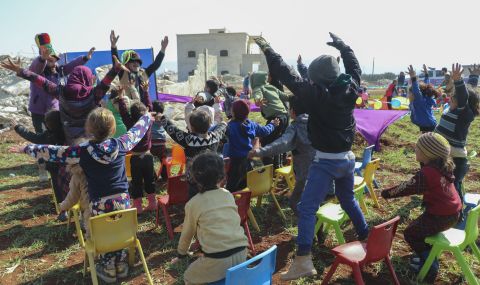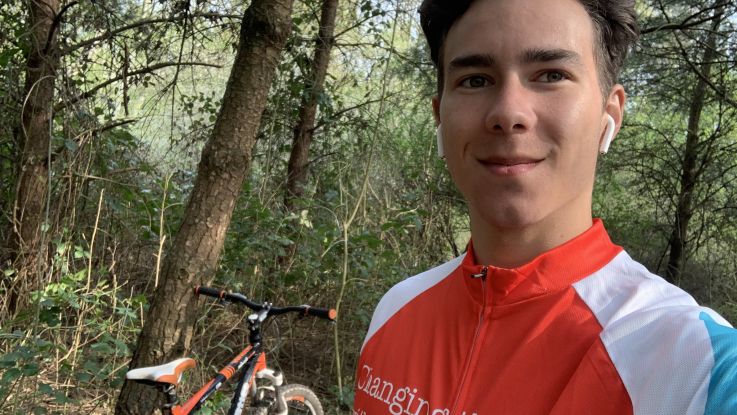World Refugee Day: everything you should know
16 June 2023
On World Refugee Week, we come together to commemorate the challenges faced by refugees all over the world, and the incredible courage they show in the face of adversity. Find out when it is and how we mark this important day.

Ukrainian refugees at a crossing point on the Polish Ukraine border. . Photo: Simona Supino/ActionAid
This year, on World Refugee Day, ActionAid is commemorating the incredible courage shown by refugees around the world, and the unbelievable challenges they face.
There are more refugees now than ever in history - by May 2023, a staggering 110 million people have been forcibly displaced worldwide1 , around half of whom are women and girls2 .
The rise in numbers last year were driven by the war in Ukraine, new estimates for Afghan refugees, climate-driven displacement and further conflict, especially in Sudan.
The Russian invasion of Ukraine has created one of the largest displacements of people since the Second World War. And other crises in Myanmar and the ongoing conflict in Syria have continued to displace people.
Find out more facts and figures about this important day, and why we choose to mark it.
What is the difference between forcibly displaced people and refugees?
According to the UNHCR, forcibly displaced people are those who are “forced to move, within or across borders, due to armed conflict, persecution, terrorism, human rights violations and abuses, violence, the adverse effects of climate change, natural disasters, development projects or a combination of these factors”.
This includes refugees, internally displaced people, asylum seekers and others seeking international protection. Find out the definitions and a full glossary of these terms and others.
Who makes up the over 110 million forcibly displaced people?
More than 100 million people are forcibly displaced in the world. This number is made up of refugees, internally displaced people and others.
- Currently, 35.3 million people in the world are refugees.
- According to UNHCR, 62.5 million people are internally displaced.
- Asylum seekers make up 5.4 million of those who are forcible displaced.
- Over 5 million people don't fit the above but are seeking international protection.
- Around 4.4 million people are considered stateless.3
What and when is World Refugee Day and World Refugee Week?
World Refugee Week is from 19 June to 25 June in 2023. World Refugee Day is observed every year, internationally, on 20 June.
It’s a chance to consider the plight of millions of refugees around the world, and also to raise awareness about the worsening situation for many.
The day was first established by the UN General Assembly in 2001, and today, events to mark the day take place all over the world.
Why is World Refugee Week important?
As of end of 2022, the number of people displaced rose by a record increase of 19.1 million compared to the previous year.3
This crisis is not going away, and we know the plight of refugees is desperate.
That’s why on World Refugee Week we shine a spotlight on the refugee crisis and, every day, we work to support refugees in crises around the world.
What is the theme of World Refugee Day and World Refugee Week 2023?
The 2023 theme of World Refugee Day is “hope away from home" and the theme of World Refugee Week is "compassion".
Where are the refugees coming from, and going to?
- An estimated 6.8 million refugees have fled the conflict in Syria. Of those, around 3.7 million are hosted in Turkey1 .
- The second-largest refugee population in the world is from Ukraine at 5.7 million.
- Nearly 5.7 million refugees from Afghanistan are now hosted in more than 70 countries around the world, but 95% are in just two countries - Iran and Pakistan5 .
- At least 2 million people in South Sudan became internally displaced persons as a result of the South Sudanese Civil War, which started in 2013.
- 38% of refugees are hosted in just five countries - Turkey, Iran, Colombia, Germany, and Pakistan
- Low-income and middle-income countries, rather than wealthy nations, continue to shoulder the burden of hosting displaced people.
- In 2022, over 339,000 refugees returned to 38 countries.
Crisis within a crisis: Earthquakes in Syria and Turkey
In February 2023, two powerful earthquakes struck Turkey including one in south-eastern Turkey near the Syrian border.
The region struck by one of the earthquakes already hosted around 1.75 million of Turkey's four million refugees - mostly Syrian refugees fleeing the civil war, living in tents and makeshift structures in camps on both sides of the border.
A complex humanitarian crisis is unfolding in the area where Syrian refugees are once again uprooted and are facing a double crisis.
Ukraine refugee crisis
Since Russia launched a large-scale invasion in Ukraine in February 2022, millions of refugees fled to Poland, Russia, Hungary, and Romania.
The war has emerged as the primary driver for mass displacement. The scale of the refugee crisis escalated drastically, with the number of individuals fleeing Ukraine surging from 27,300 by the close of 2021, to a shocking 5.7 million by the conclusion of 2022.
ActionAid launched a large-scale cash programme to provide cash to refugees, so they can choose how best to support themselves. We also work with an organisation to deliver medicines and baby food to an orphanage in Ukraine, and are working with partners to prevent trafficking and gender-based violence, such as prevention at border entry points and psychological support.

Violet, ActionAid's partner in Syria, are providing psychosocial counselling and emotional support to children through mobile units. This includes puppet shows and play, led by specialist teams.
Why climate change is making things worse
Increasingly, the growing threat of climate change is making the plight of refugees worse.
As the climate changes, drinking water is likely to become more scarce, and crops and livestock can suffer and fail, threatening people’s livelihoods and making food more insecure around the world6 . Extreme weather is also contributing to natural hazards.
As a result, the UN recognises that people are already being forcibly displaced from their homes, or are choosing to relocate in order to better their chances of survival.
The Global Compact on Refugees, adopted by the UN General Assembly in December 2018, said: ‘climate, environmental degradation and natural disasters increasingly interact with the drivers of refugee movements.’7
Not only this, but new displacement patterns, and competition over resources can create conflict between communities or make existing conflicts worse.
We know the poorest people in the world are being hit first and worst by climate change."
That’s why ActionAid is working with communities across the world to develop solutions that help people adapt to the impact of climate change, and support their families.
This includes supporting farmers with climate-resilient crop seeds and farming methods, training women and children on how to respond to cyclone warnings, and supporting the building of flood-proof villages.
How women and girls are affected
At ActionAid, we know violence against women and girls increases during all emergencies, especially during displacement and conflict.
Women and girls who are refugees are more at risk of violence including mass rape, sexual slavery, forced pregnancy, forced ‘marriages’ and being forced to offer sex in exchange for food or shelter.
Extreme poverty can put pressure on families to ‘marry off’ their daughters to someone who can provide for them.
That’s why, as part of our work around the world, we support refugees with life-saving humanitarian aid, including food, safe drinking water and shelter. This is just one of the ways we work to reduce poverty and end violence against women and girls.
We also provide hygiene kits, including sanitary protection, clean underwear and soap, to women and girls in crises.
In emergencies, women and girls tell us that among the items they need most are sanitary pads, which allow them to manage their periods safely and with dignity."
After fleeing their home with nothing, some women and girls have no access to sanitary protection, and can risk serious infection by using improvised materials to manage their periods - or even go without their next meal to buy clean pads.
No girl, anywhere, should have to choose between food and sanitary protection.
How can I help?
This World Refugee Day, we're standing with millions of refugees around the world who have been forced from their homes due to conflict and disaster.
Today, their need is greater than ever.
But your support could provide essential food supplies for a vulnerable family living in a refugee camp. Please donate today.
Footnotes
- 1 a b https://www.infomigrants.net/en/post/49656/un-says-some-110-million-people-displaced-around-the-world
- 2https://www.unhcr.org/what-we-do/how-we-work/safeguarding-individuals/women
- 3 a b https://www.unhcr.org/global-trends-report-2022
- 5https://data.unhcr.org/en/situations/afghanistan
- 6https://www.unhcr.org/uk/climate-change-and-disasters.html
- 7https://www.unhcr.org/uk/climate-change-and-disasters.html


